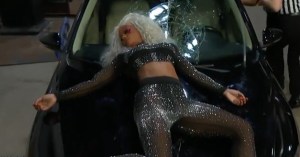
Sony Pictures Animation have shared a new animation test from Genndy Tartakovsky’s Popeye feature film. This is interesting stuff, for a number of reasons, but before I launch into the history and animation theory, here’s the video.
Videos by ComicBook.com
In the early days of hand drawn cartoons, specifically in the US, the dominant style was what we call “rubber hose” animation. Moving into motion from strip cartoons, artists didn’t just have to create their characters in frozen, posed panels, they now had to move their limbs a frame at a time in a way that suggested motion through 3D space.
Or rather, rubber hose was a way to work around this, to cheat the system and create something easier to produce for many thousands of frames per film, quickly and cheaply. Felix the Cat is maybe the most representative rubber hose toon but Popeye shorts, particularly in their earlier, black and white days, also had this look.
Contrarily, the early days of computer graphics were all about hard, rigid shapes in perfectly created 3D space. The computer animation pioneer and the hand drawn animation pioneer were facing the exact opposite problems to one another: one had perfect 3D rotation at their fingertips, the other had to try and cheat it onto a flat page.
Now, with Popeye, the rigid robo-mind of the computer animation software meets the bendy, wobbly look of rubber hose. Tartakovsky and co. have tried to make the most of both worlds in this test, and as you see Olive Oyl scrambling around on the floor, for example, you’ll see she has those expressively elastic limbs arcing in the way pen and ink could create so easily, but that they’re spatially and anatomically consistent, within the style, thanks to the advantages of CG.
There are plenty of other, post-rubber hose hand drawn techniques smuggled into this clip too. Look at the bad guys getting walloped, for example, and you’ll see they have a very Looney Tunes-like bendiness, different to the hose style but still very alien to the rigid, mathematically pedantic basis of CG rendered characters.
Or, to boil all of that down to just one sentence: Tartakovsky is going for the best of old school and new school here, all at once, and that’s a very promising thing.



